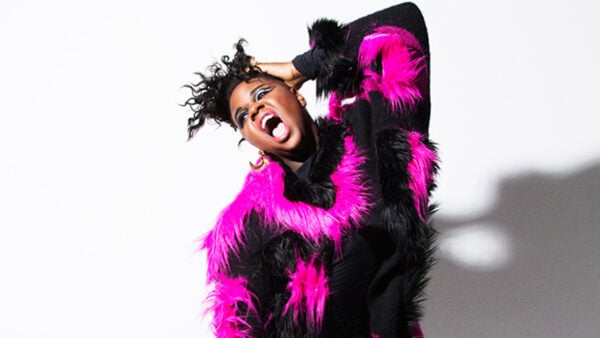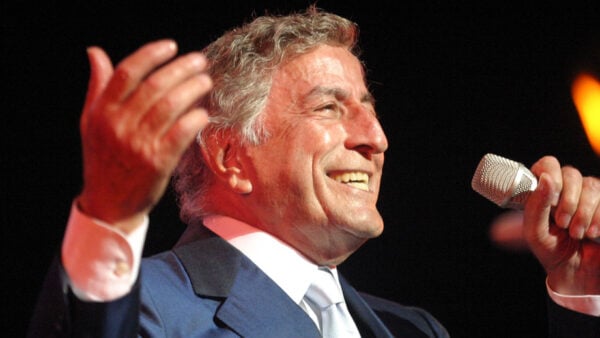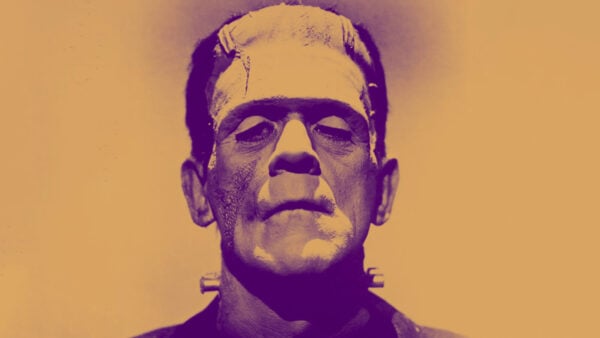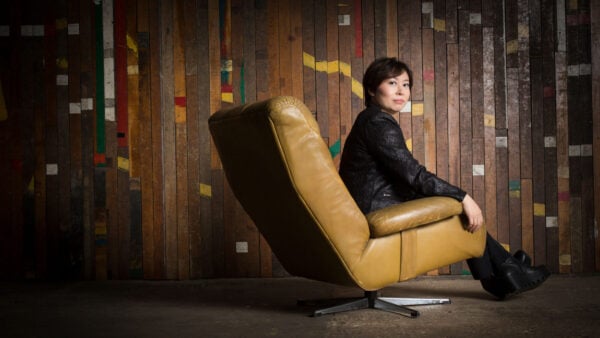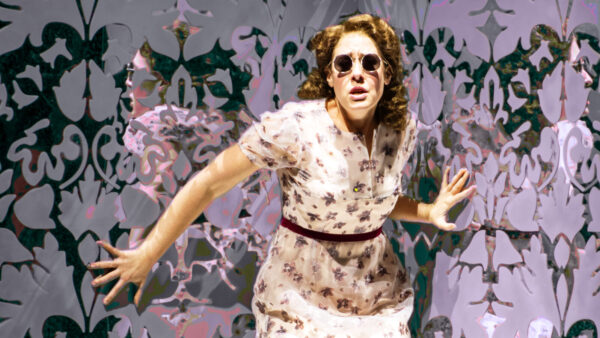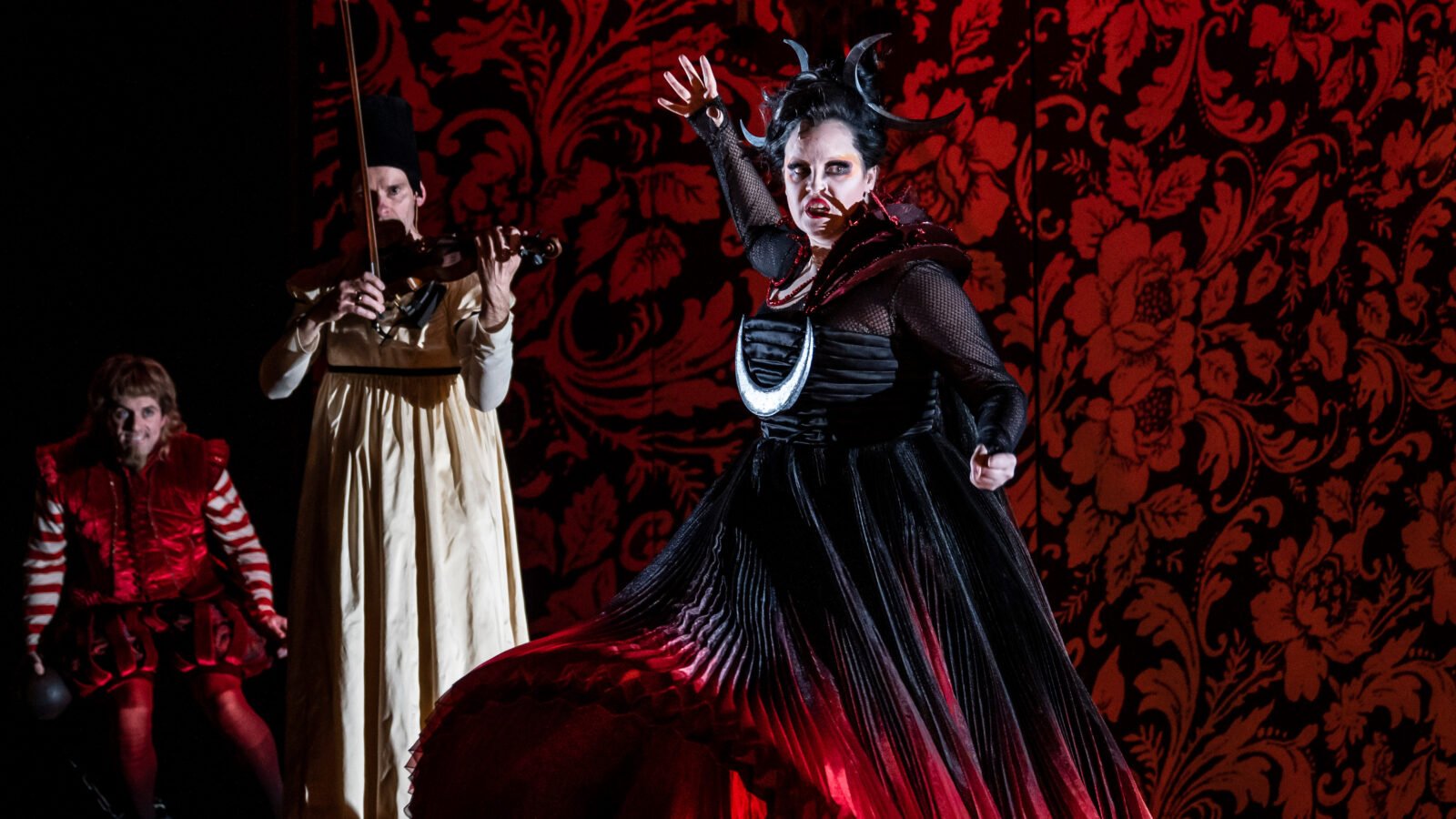
(L-R) Russell Mernagh, Dave Belden, and Emily Rohm in The Matchbox Magic Flute (Photo: Liz Lauren)
Tony-winning director and playwright Mary Zimmerman wants you to know what you’re getting yourself into.
“If you’re a purist who loves every single note of that opera and consider it sacrilege to cut a note or to re-score it, you probably want to stay away.”
This weekend, she unveils her take on a Mozart classic; The Matchbox Magic Flute opens on February 10 at the Goodman Theatre.
As the name implies — and the adapter/director stresses — the English-language production is a reimagining of The Magic Flute.
Zimmerman, a professor at Northwestern and an artistic associate of the Goodman, conceived her lovingly miniaturized version for the company’s Owen Theatre, a small, 350-person space.
Don’t worry, though. The story is intact, and it’s still Mozart’s music, just reduced to a five-piece ensemble. The cast is condensed, so key players are juggling roles.
Zimmerman is no stranger to The Magic Flute. In fact, the timeless work was her first foray into directing opera. Hailing from a theater background, Zimmerman came into the opera world through the Chicago Opera Theater. The company needed a director for its 1995 Flute production.
But she hastens to clarify — it wasn’t her production. The costumes and scenery were shipped in from another company, which would leave her mostly responsible for staging the show. “I initially passed on it… and I immediately regretted it,” she recalls. After her change of heart, she ended up directing the performance.
“I couldn’t turn down Mozart!”
In the intervening years, Zimmerman has mounted successful productions of Shakespeare, Hans Christian Andersen, Homer’s Odyssey, and Goodman’s 2013 Jungle Book musical. In 1998, she won a MacArthur Fellowship. In 2002, she won a Tony for directing her own adaptation of Ovid’s Metamorphoses. She worked with Philip Glass to co-write the libretto for his opera Galileo Galilei (a Goodman commission). She also helmed high-profile opera productions, including the Met’s Rusalka and recent Florencia en el Amazonas, as well as the world premiere of Matthew Aucoin’s Eurydice at LA Opera.
Now, finally, she gets her very own production of The Magic Flute.
Between rehearsals, WFMT spoke with Mary Zimmerman via Zoom about what you need to know about her take on this classic work.
WFMT: What does “Matchbox” mean in this case, and what was the inspiration for this approach?
Mary Zimmerman: It comes from the idea of matchbox car toys, because they are scale models of something shrunk down into itty-bitty size.
I don’t know when this started, but in the 19th century at least, you could buy little paper cut out theaters of particular operas with all the characters, and they were sort of toys. Quoting a grand opera house was sort of charming and exciting to me.
I’ve long wanted to do a Flute of my own, but I wasn’t consciously thinking about it.
Susan Booth, the new artistic director of the Goodman Theater, and I had talked about, what might I do? I’ve wanted to work in the Owen, the small space. She’s wanted a show that was not necessarily for children, but that children could go to, that anyone could go to.
I was taking a shower, and it just seized me. “Do Magic Flute!” I became so terrified and excited at the thought of taking this enormous thing and putting it into a little space and making it very intimate and close up.
And also, the kind of hope that by having a few musicians in a 400-seat house, that they could potentially sing it 8-and-a-half times a week.
WFMT: How does this Matchbox version differ from other productions that audiences may be familiar with?
Zimmerman: It’s not remotely original to reduce the opera in its length, to cut it and rearrange. Literally every production almost does that.
But ours is not The Magic Flute. It’s an adaptation. It’s like a hybrid. It’s a tiny stepchild of that opera.
Very early on, I remember thinking we could do the Klezmer or the Bluegrass Magic Flute. We decided against that; it’s just got to be in the classical idiom.
However, it obviously has to undergo a kind of radical change just because it’s being voiced on so many fewer instruments. The tunes are there, they’re just not performed as for a grand opera house.
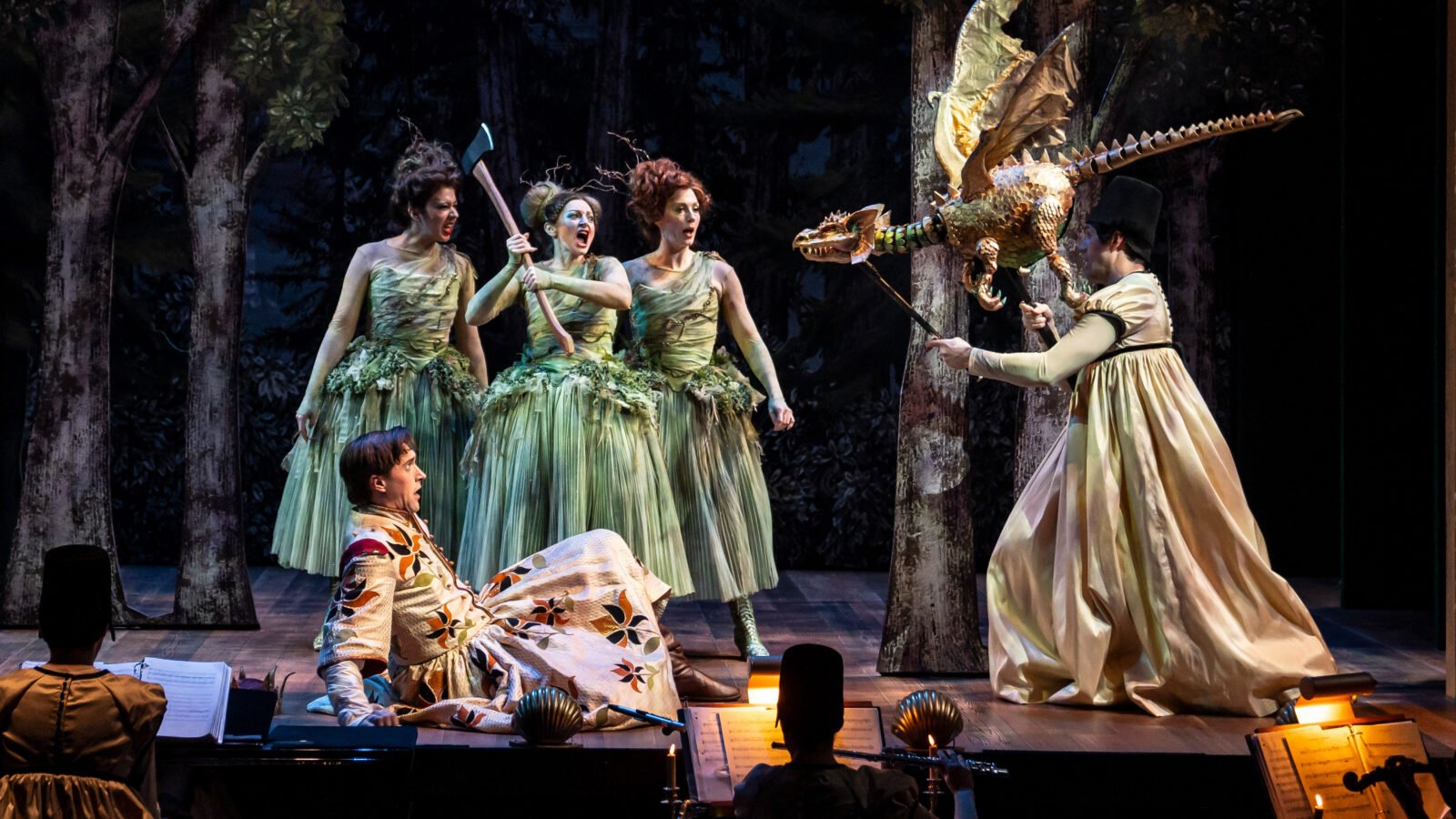
(L-R) Tina Muñoz Pandya, Lauren Molina, Monica West, Russell Mernagh, and Billy Rude (on ground) in The Matchbox Magic Flute (Photo: Liz Lauren)
There’s a kind of friendly smallness and, and closeness to it. It’s sort of maximalist in a tiny little space. It’s presentational and playful, like the great illustrators of classic children’s literature. Very old-fashioned and very painterly.
The costumes are very imaginative and colorful and detailed… what you would expect from a Flute. They establish a world that isn’t quite our world.
WFMT: As a hybrid of both opera and theater, how is the directing process different here than in other operas you’ve worked on?
Zimmerman: A very big part of a director’s job in the theater is casting it.
I don’t cast the operas that I do at the Met. It’s so singer-driven that generally, the opera is chosen based on the availability and appropriateness of certain singers. It’s often cast before you even come on.
We would never reduce it to what I’m about to say, but in rehearsing a play, a very reduced form of what you’re doing is negotiating the pace, pitch volume, accent, rhythm of any given line. That determines the emotional meaning.
In opera, all of those dynamics are extremely well described in the score. You can’t sing at a different pitch. You can’t slow down if the orchestra is speeding up. You can’t go soft if the score indicates you need to be going loud.
For this show, I said my ideal cast member was someone who thought they were going to be an opera singer and trained a couple years in voice… and then went off into the musical theater. I have exactly that in two or three people. And then I have a ringer in Keanon Kyles, our Sarastro, who has sung all over the world, including La Scala. And then we have people who, I would venture to say, have never seen an opera as well. Sort of everything in between. It’s an eclectic cast.
I’ve always been enamored of Flute. And I’m extremely enamored of my cast and what they’re doing. The performances are so detailed and graceful. For me, it’s a dream.
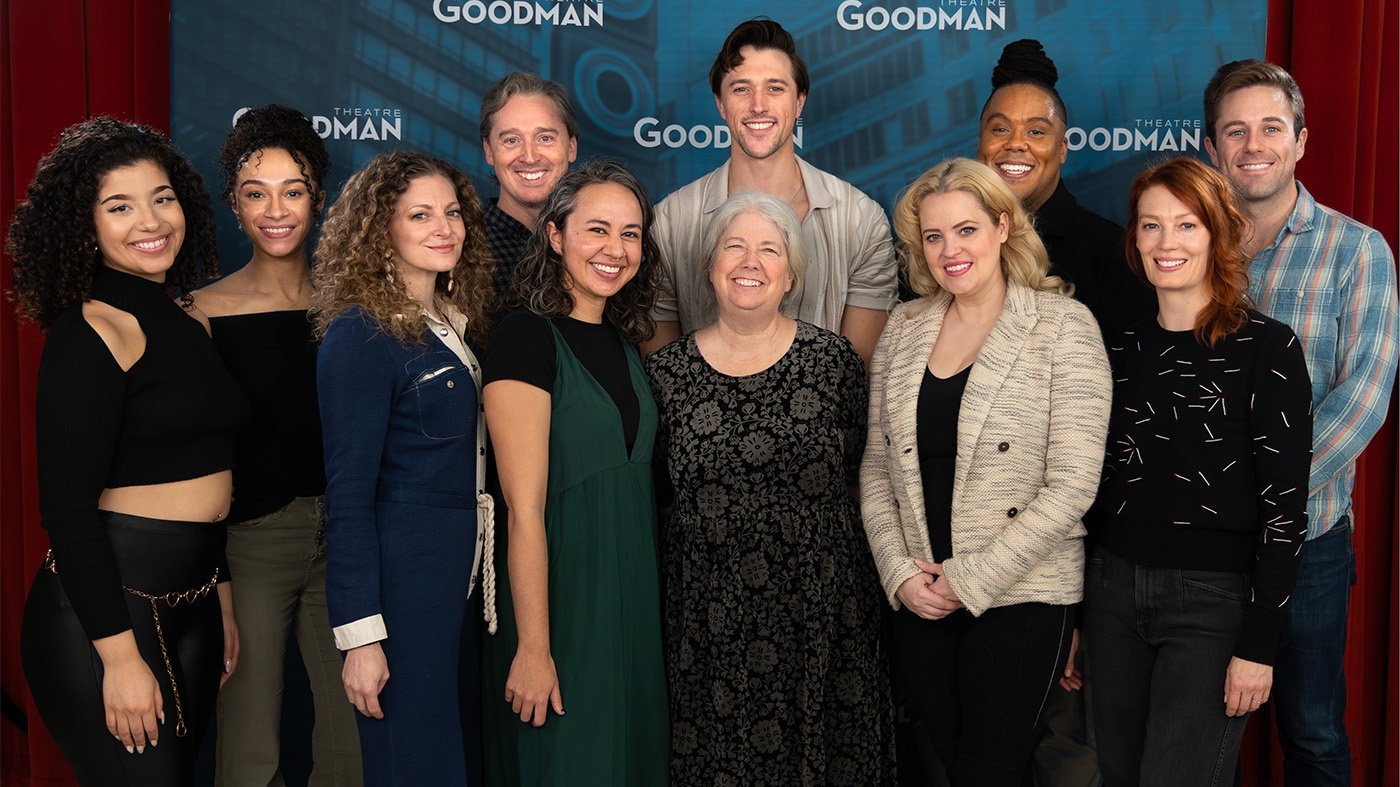
The cast and crew of The Matchbox Magic Flute (L-R, Back) Marlene Fernandez, Reese Parish, Shawn Pfautsch, Billy Rude, Keanon Kyles, and Russell Mernagh (L-R, Front) Lauren Molina, Tina Muñoz Pandya, Mary Zimmerman, Emily Rohm, and Monica West.
WFMT: Why do you think The Magic Flute holds such timeless appeal for audiences of all ages and backgrounds?
Zimmerman: The music itself is a kind of magic or enchantment. How often the word “harmony” is used both literally and figuratively. It’s being used literally in the vehicle of the message. But it’s also stated metaphorically, as we’re looking for the harmony between the night and the day, the sun and the moon, the balance, right?
The piece itself, as Mozart wrote it, is a kind of gateway to enjoying opera for younger people for first exposure.
But I hope the production, even though it really is not an operatic production, might be a gateway for people who think that they hate opera. Think that it’s inaccessible. Think they never want to go.
We are not trying in any way to overthrow or improve upon or even compare ourselves to these great, enormous productions. That thing still stands forever. This is just our playful little moment with it.
What I hope is gained in a smaller scale is a kind of immediacy, an unfiltered closeness to this spirit of fun and light.
The Matchbox Magic Flute, adapted and directed by Mary Zimmerman, premieres at the Goodman Theatre on February 10 and runs until March 24. For ticketing and information, visit goodmantheatre.org. This interview has been edited for length and clarity. This piece has been updated with performance photos.

